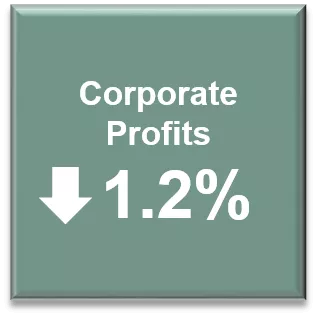January Economic Commentary: Slow Growth Continues

Chief Economist
Pohlad Companies
The December 13 announcement of the Phase I China trade deal appears to have taken the worst-case outcome of the trade war off the table – at least for now. While it is too early to see the impact in any economic data, as discussed previously, economic growth has been slowing throughout 2019, both domestically and globally. The trade war may not have been the only cause of this slowing, but it certainly did exacerbate the slowing trend that started in mid-2018. The Phase I announcement was met with a positive response from most global fixed income and equity markets. It will be interesting to see how quickly progress is made on Phase II.
Employment
In the U.S., consumer spending remains the main support for the economy. Representing 70% of GDP, consumer spending is closely linked to the health of the labor market. The January 10 release of the December employment report was below expectations but still indicated employment growing at a rate that will keep the unemployment rate near its 50-year low of 3.5%.
Nonfarm payrolls increased 145,000 in December, which was below the consensus estimate of 160,000. The unemployment rate stayed at 3.5% and the broadest measure of unemployment, the U-6 rate that includes marginally attached workers plus part-time employed for economic reasons, fell to 6.7%, the lowest level since this series was initiated in 1994.
Average hourly earnings were weaker than expected, resulting in the year-over-year growth rate falling to 2.9%, the first time it’s been below 3.0% since mid-2018.

GDP
In late December, we received the final reading on third quarter real GDP at 2.1%, up slightly from the 2.0% reading in the second quarter. Of particular interest was the revised reading to corporate profitability in the quarter. Profitability decreased $4.7 billion in the third quarter, in contrast to an increase of $75.8 billion in the second quarter. On a year-over-year basis, corporate profits contracted by 1.2%—another reflection of the slowing economy.
The initial reading for the fourth-quarter GDP will be released on January 30 and is expected to show less than 2.0% growth in the quarter. If that forecast is correct, real GDP growth for the year 2019 will be close to 2.2%—down from 2.9% in 2018. 2020 growth is expected to be closer to 2.0% for the year.
Inflation Watch
The slow-growth economy is helping to keep inflationary pressures in check, and consequently interest rates are expected to remain low. Chairman Powell has said that rates will not be increased again until inflation rises materially and surpasses 2%. Market expectations point to no moves in interest rate policy through the middle of 2020. Historically, the Fed rarely makes any interest rate moves during a presidential election year.
Given the current data, expectations for a recession have been moved forward by most analysts from 2020 into 2021 or beyond. There are undoubtedly risks to this benign assessment as exemplified by the recent geopolitical events in Iran. On the positive side, however, most global central banks are in an accommodative mode, and the value of the U.S. dollar appears to be easing (that’s positive for foreign economies). Continue to monitor the health of the U.S. labor market for the ability of the U.S. consumer to provide the primary support for the U.S. economy. This will remain an important data point going forward.
Insights
Research to help you make knowledgeable investment decisions